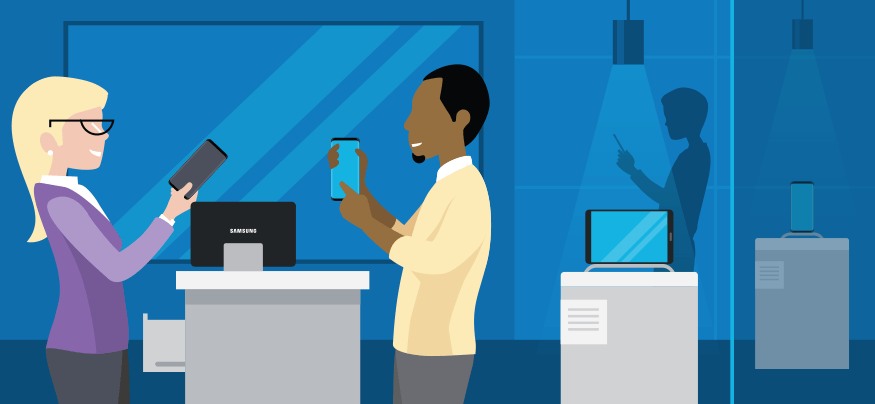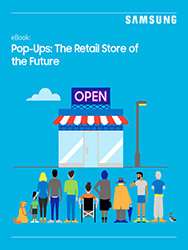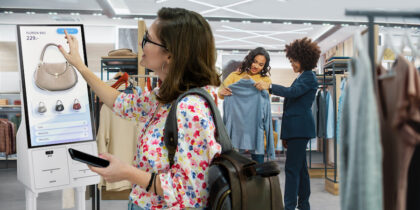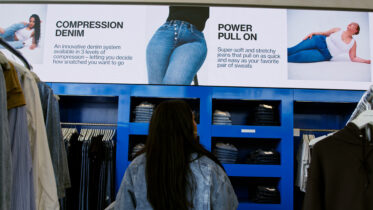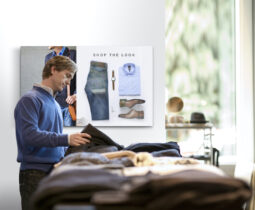Pop-up retail is becoming more popular than ever as retailers of all sizes use small, temporary spaces to expand their footprint and build their brand.
Retailers that are compelled to deploy a pop-up are often driven by the desire to introduce a product, expand their brand into a new market, test a new strategy or capitalize on an event. Overall, companies should have a compelling reason or objective to create a temporary space, and they should identify their goals and determine how they will define success.
Here are five key elements to open a successful pop-up store:
1. Find the Right Location
Location is critical for a pop-up store to be successful. They can be located in another store, at event spaces, in malls or in vacant street-level retail outlets.
“Store-in-a-store” locations are best for retailers or brands seeking to reach a highly relevant and specific customer. The benefits of taking this route is that the pop-up can usually gain higher engagement with a bigger audience and with a smaller footprint. Depending on the agreement with the host retailer and the benefit they’ll attain from the pop-up, it could also mean lower expenses.
Pop-ups are also growing in mall spaces. An advantage of being located in a busy mall is that the pop-up gets in front of consumers who are already shopping and ready to buy. This can be a good option for a pop-up that needs more space for products and wants to be separate from other retail. When selecting a location, consider foot traffic and property performance. Malls offer a variety of options from available store space and open floorplans to carts and kiosks.
Take Your Store to the Next Level
Discover how connected pop-ups can help you drive successful retail initiatives. Download Now
Other things to consider include other notable nearby retailers and public accessibility. Within the space itself, some important factors are lighting, access to Wi-Fi, electrical infrastructure and the availability of backspace for stock if needed.
2. Design the Store to Fit the Brand
It’s essential that the pop-up store layout and customer experience fits the brand and market. The most successful pop-ups often have a niche focus or timely product to market, or they may be timed to a seasonal need, event or audience.
Think beyond the boundaries of traditional retail and use space, technology and content to design a store that complements the brand. Some industry specific examples include:
- Nike opened a pop-up shop in downtown Cleveland in October to sell exclusive LeBron James tees, jerseys and three different versions of the Nike LeBron 15 sneakers.
- Amazon teamed up with Calvin Klein on a number of holiday-themed pop-up stores in Los Angeles and New York.
- Ikea opened small pop-ups in Kuwait and Jordan that use virtual reality and large digital displays to entice customers to design a room and visit a full-size nearby store.
By designing pop-up experiences that fit into the overall brand, companies will be able to pique shoppers’ interest if they are already familiar with the product. It is also an avenue to attract new customers that may be curious about the brand.
3. Create a Unique and Interactive Experience
The most successful pop-ups create a unique and interactive experience. A pop-up can offer an opportunity to deliver a higher level of interactive technology and customer engagement not found in traditional retail.
Many retailers are using pop-up spaces as a hybrid retail model to create more intimate relationships with their customers. Get creative and think beyond simply selling products: Aim to educate, enhance the relationship, learn more about their needs and deliver compelling content. Use the pop-up as a marketing tool for the brand to learn about customer behaviors, experiment with new strategies and offer on-site services or amenities.
A unique experience can also be tied to a specific location or theme. Nike’s “Sneakeasy” in New York City in last month offered limited edition classics and soon-to-be-released products. Because the space was in a shuttered bank, shoes were dispensed via a door designed to look like a safety deposit box.
Some pop-ups have the sole purpose of simply building the brand. Samsung’s Galaxy Studio locations offer hands-on experiences with the company’s latest products with a VR theater and interactive art installations.
4. Deploy the Right Technology
Because pop-up retail typically has a small space and needs to be agile, technology can be an effective tool to help create the experience. Rich digital media and custom content can be broadcast on digital signage to engage consumers in the store. High-quality wall mounted monitors, stretch displays and video walls can also engage consumers with lifelike and interactive content.
Enterprise-grade tablets, such as the Samsung Galaxy can enable associates to actively engage consumers anywhere in the store. When equipped with the right software and aftermarket enclosures, tablets can also serve as a compact kiosk or a mobile point of sale device.
Cameras can also be deployed to learn more about foot traffic patterns and how consumers move about the store. Data can be collected to not only improve conversions in the pop-up, but also be used to enhance the experience back at the traditional store. Before integrating data capture technology, retailers should consider what information is most beneficial to the organization and what type of hardware is best suited for application needs.
Retailers that want to take the hassle out of the equation should consider a turnkey solution. Samsung Connected Spaces offer a one-stop, plug-and-play, customizable solution that offers all the fixtures, equipment and technology needed.
5. Market the Pop-Up Store
It takes more than just building a pop-up store to attain success. Retailers must still market the location and give consumers a compelling reason to visit. Effective marketing strategies can include demonstrations, live events, performances and visits by notable guests.
In November, Wrangler paid tribute to its hometown of Greensboro, N.C., for its 70th anniversary by opening a 1,500-square-foot pop-up in a historic building and by placing jean sculptures throughout the city. The retailer also offered alterations and custom stitching in-store with vintage sewing machines. By supporting a unique, one-of-a-kind experience, Wrangler was able create an environment with a higher level of interaction and services than a traditional retail store.
For a connected pop-up store, retailers can also use the existing technology to also push marketing efforts beyond the space. Creating incentives to visit such as limited edition products and social media experiences can also be effective.
Overall, pop-ups present plenty of opportunity for retailers to engage with today’s consumer in a variety of new ways. With these environments, companies are able to test products, build interactive experiences and cultivate their brand beyond traditional retail setups.
Looking for more cutting-edge retail solutions? Check out our full line of innovative retail technology.
